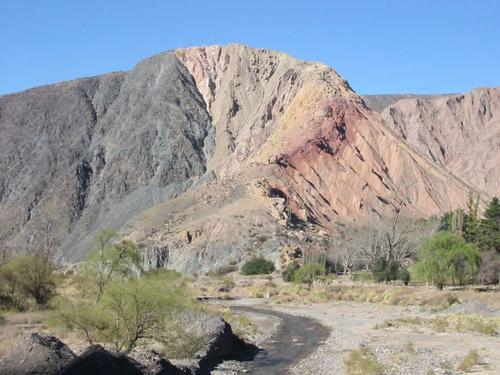Faults
Precambrian - Paleozoic basement (dark colour, left) and Cretaceous - Tertiary rocks (brown colour) in tectonic contact through a reverse fault. Quebrada de El Toro, Andes, Argentina
Image Credit: MBG
Faults are discrete displacements of formerly coherent rocks as a result of stress exceeding the internal strength of a rock. The displacement of rocks in any orientation, from horizontal to vertical direction, occurs along a fault plane as result of either compressional or extensional forces.
The most important fault types include: Normal faults, reverse faults, transform (strike-slip) faults, and oblique faults.
Normal faults result from tensional forces when rocks are displaced away from each other. Reverse faults results of compressional forces when rocks are displaced towards each other. Strike-slip or transform faults results from either compressional or extensional forces when rocks slip parallell to each other.
Oblique faults result from the combination of normal or reverse faults with a transform fault component.


